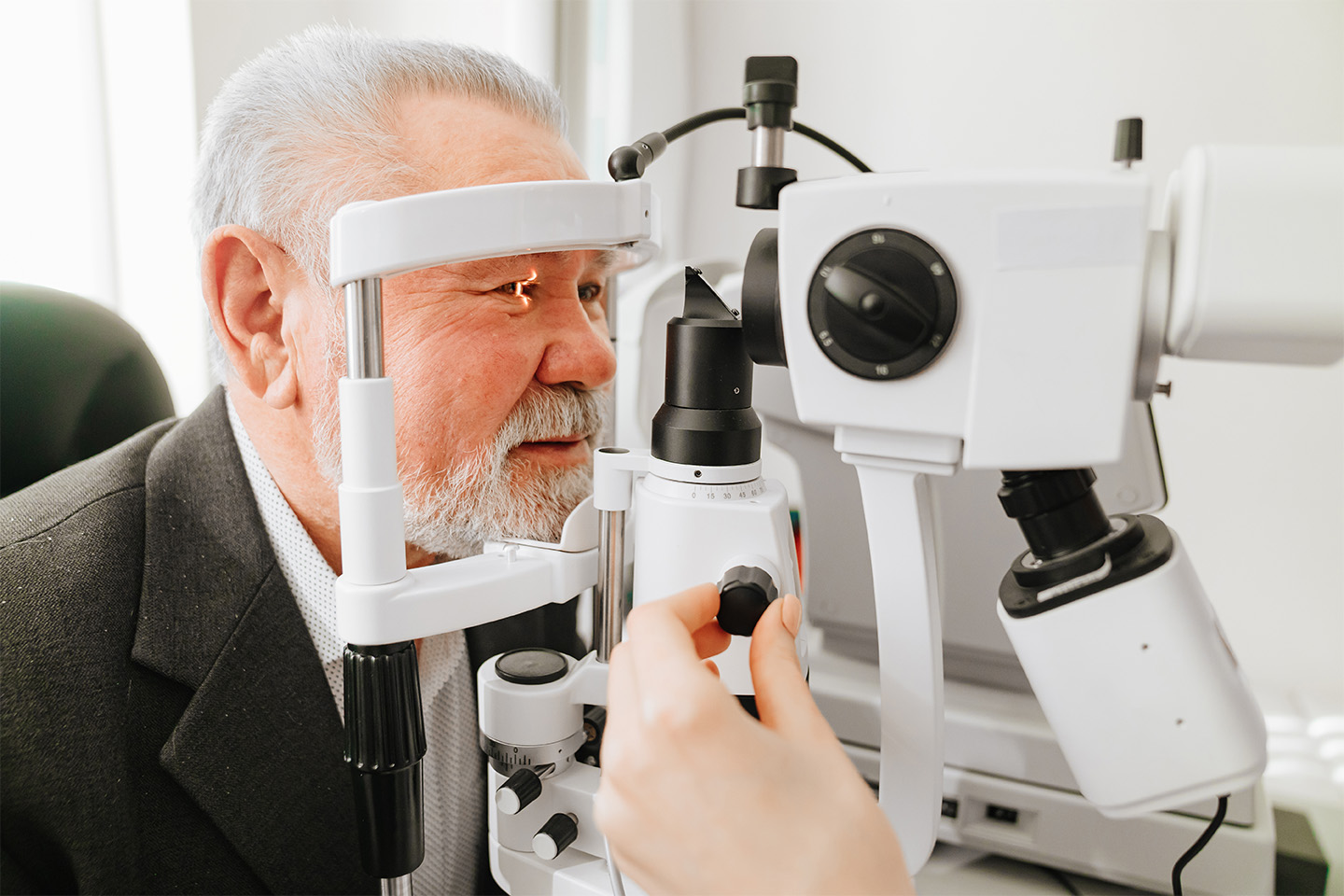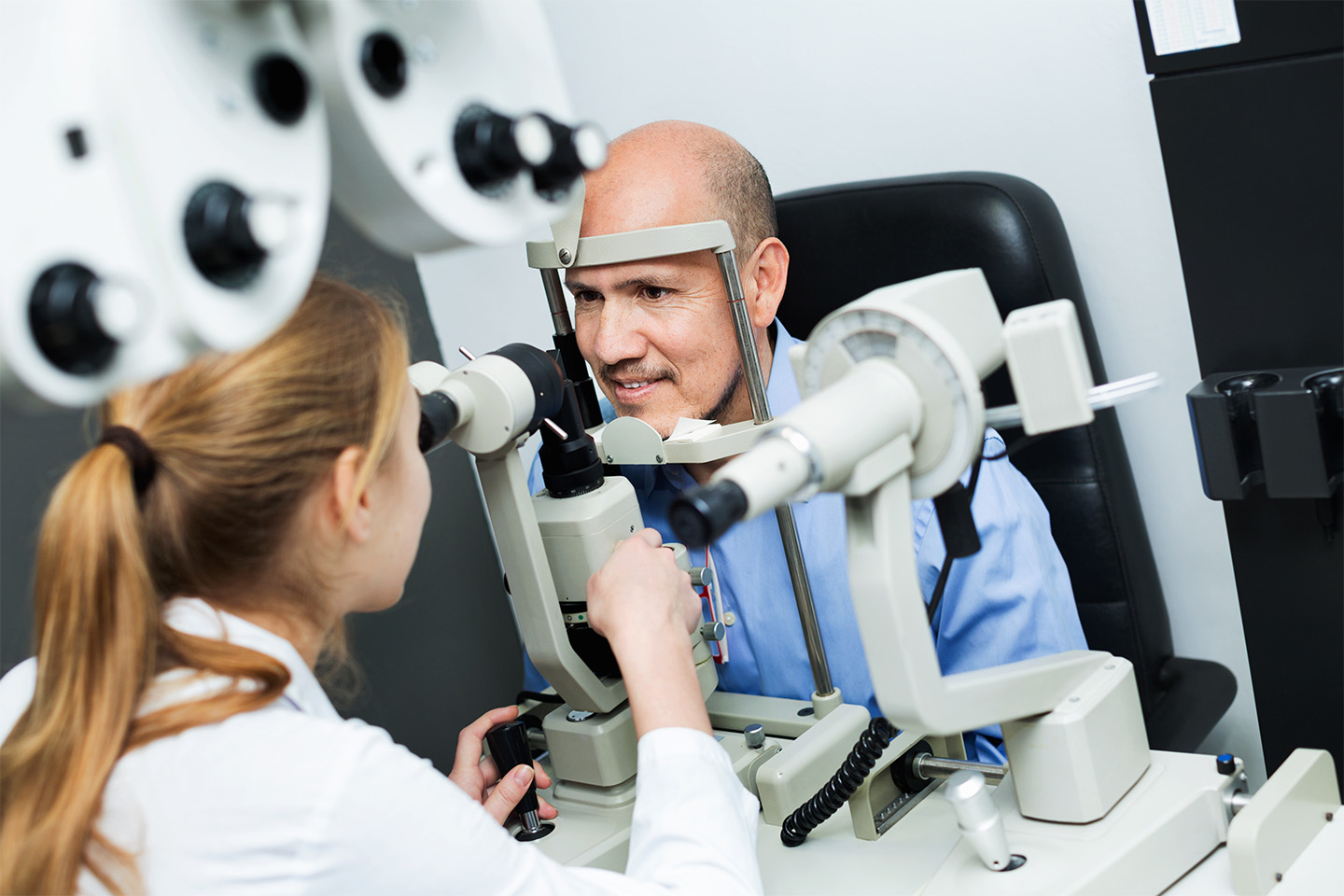Your Different Options for Laser Vision Correction

YOUR DIFFERENT OPTIONS FOR LASER VISION CORRECTION
When it comes to laser vision correction surgery, many people use the catch-all phrase “LASIK.” But the truth is LASIK is one specific type of procedure and your eyes and vision needs may make you a better candidate for a different type of laser vision correction. All the most common procedures have similar outcomes and are FDA approved.
Types of Laser Vision Correction
Many of the laser vision correction procedures used today are related and result in patients no longer needing corrective lenses for clear vision. The most common types of laser vision correction are:
- LASIK
- PRK
- Refractive lens exchange
When evaluating your eyes, your ophthalmologist will take several factors into consideration before recommending the best procedure for you.
LASIK
LASIK is the most well known and most common form of laser vision correction surgery. This bladeless procedure uses a laser to make a small flap on the surface of your cornea. The laser then reshapes the underlying cornea (which is responsible for focusing light on the back of the eye, resulting in clear or blurred vision). When the procedure is over the flap is laid back down and the patient often notices an immediate improvement in their vision.
LASIK is performed as an outpatient procedure with local anesthesia applied to the eye. The entire process takes only a matter of minutes per eye and has a short recovery time. Patients can often drive themselves to the day-after follow-up appointment and can resume strenuous activates after a few weeks with a doctor’s approval (after the flap has enough time to heal).
LASIK is a good fit for many patients, but requires the patient’s cornea to be a uniform shape (this is necessary for the flap to reposition and heal correctly). Simple eye topography mapping done during your LASIK consultation appointment will allow your doctor to judge whether your eye is a good fit for LASIK or if PRK is the better procedure for you.
PRK
PRK (Photorefractive Keratectomy) is the predecessor of LASIK. The current form of PRK is also a laser-based, bladeless procedure. As with LASIK, PRK is performed as a simple outpatient procedure only requiring local anesthetic of the eye and taking only a few minutes per eye.
Unlike LASIK, PRK is considered a ‘flap-free’ vision correction procedure. During PRK, the top layer of your cornea is removed, allowing surgeons to access a larger treatment area. The underlying cornea is then reshaped with a laser just as it is with LASIK. When the procedure is complete, clear contact lens are placed on each treated eye to protect the eye during healing. Because PRK does not create a flap on the surface of your cornea, PRK patients do not need to worry about disrupting the flap in the future.
PRK treatment tends to be more uncomfortable — or even painful — during healing than LASIK. It also requires a longer recovery time and patients will not see vision improvements as quickly as LASIK patients.
PRK is an excellent treatment option for patients who are not good candidates for LASIK. Patients with uneven corneas (corneas that are not as spherical as doctors would like for proper LASIK flap healing), especially thick or thin corneas or patients who have previously received LASIK surgery are all prime candidates for PRK vision correction.
Refractive Lens Exchange
In more extreme cases, your ophthalmologist may recommend Refractive Lens Exchange (RLE). This procedure more closely resembles cataract surgery than it does its vision correction cousins LASIK and PRK. However, the result remains the same — eliminating the need for prescription eyewear.
During refractive lens exchange, your natural eye lens is painless broken up and removed using modern laser technology. The lens is then replaced with a high-quality intraocular lens (IOL). Your surgeon will work with you to choose the right IOL for your eyes and vision needs as the lens chosen has a large influence on your post-procedure vision. RLE is a highly-customized procedure to ensure the best results.
Because the IOL replaces your natural eye lens, patients who undergo refractive lens exchange surgery are no longer at risk of developing cataracts — a common eye disease that can develop with age and causes the lens of the eye to become cloudy. RLE is a good vision correction option for people with thin corneas, presbyopia or extreme prescriptions that make LASIK and PRK inadequate procedures.
No matter which laser vision correction procedure is best for your eyes, your skilled ICON Eyecare surgeon will recommend the right treatment for you to help you achieve a glasses-free lifestyle.
About ICON Eyecare
ICON Eyecare is a leading surgical and medical eye care provider based out of Denver, CO. Since 1999, ICON has been building a Center of Ophthalmology Excellence empowered by an expert team of board certified physician specialists, the most advanced laser technology and a culture of quality and extraordinary patient care. In coordination with referring optometrists and physicians, ICON Eyecare specializes in treating patients with cataracts, advanced forms of glaucoma and other age and disease related conditions, while providing innovative options for patients seeking LASIK and cosmetic eye procedures. With 14 patient care centers located in Colorado and Texas, ICON Eyecare is expanding within the broader western U.S. region. For more information, please call (720) 524-1001, or visit iconeyecare.com.









